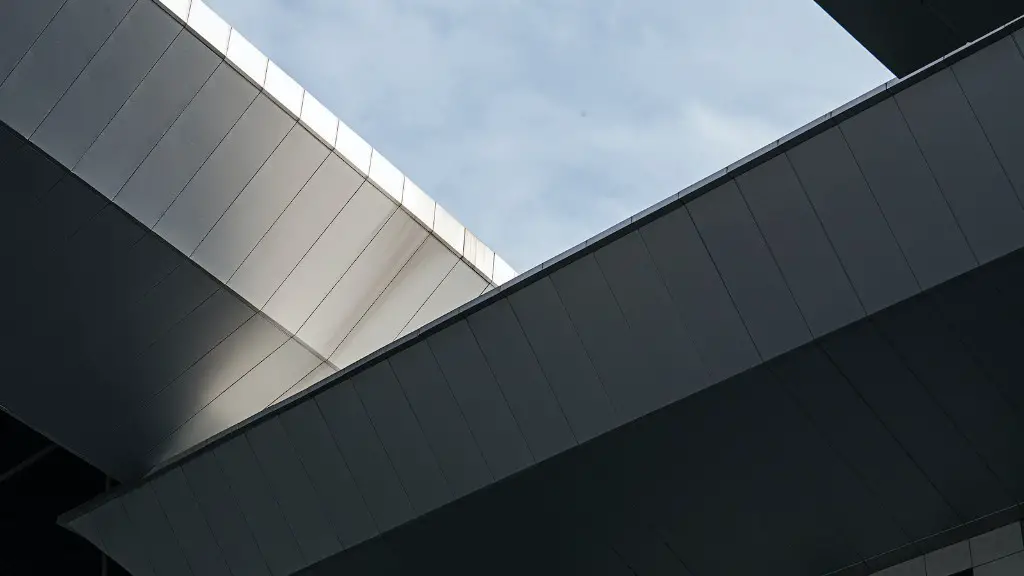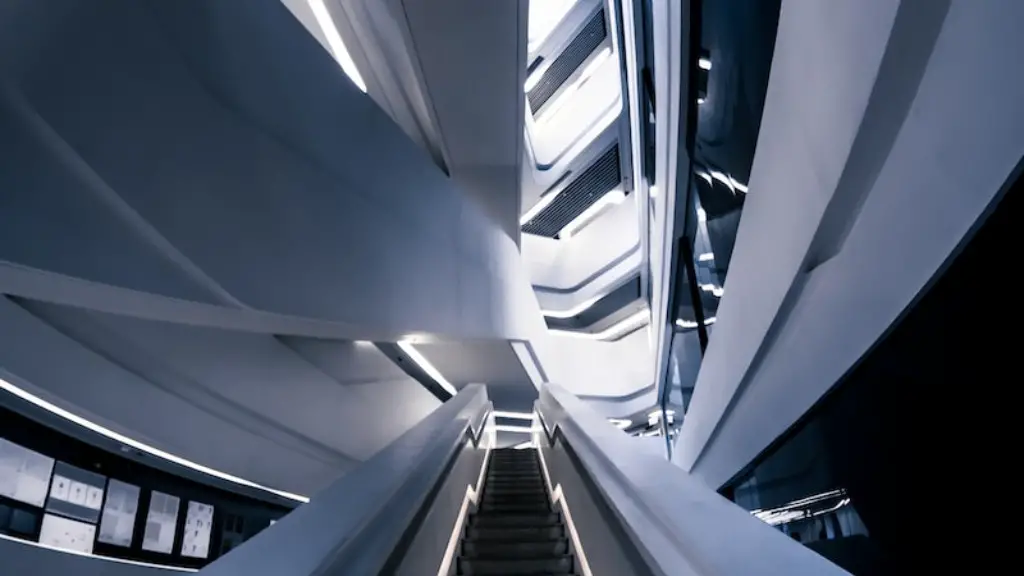When we talk about website architecture, we are referring to the organization and structure of a website. This can include things like the website’s navigation, the way its content is organized, and the overall look and feel of the site. Website architecture is important because it can make a website more user-friendly and easier to navigate. A well-designed website architecture can also make it easier for search engines to index and rank a website.
In computing, website architecture is the art of creating, planning and designing a structure for websites. It is a branch of information architecture. Web architecture aims to create a structure that is optimal for both users and search engines, while also taking into account the technical limitations of web browsers and web servers.
What are the 3 types of web architecture?
There are three types of web app architectures: legacy HTML, widget, and single page.
Legacy HTML web apps are the most widespread type. They are based on a user receiving the entire HTML on request.
Widget web apps are single page apps. They are based on a user interacting with a small piece of code, called a widget, that is embedded on a web page.
Single page apps are based on a user interacting with a single page. The entire app is contained within that one page.
A well-organized website architecture makes it easy for users to find the information they need quickly and without hassle. It also makes it easy for search engines to index your content so that it can be properly ranked in search results. A good website architecture begins with a clear and concise homepage that links to the most important pages on your site. From there, pages should be grouped logically within directories so that users can easily find what they’re looking for.
How to create a website architecture
Creating an information architecture for web design can be a daunting task, but it is essential for creating a user-friendly website. The first step is to conduct customer research to understand the needs of your target audience. Next, you will need to review and update the content on your website to ensure that it is relevant and up-to-date. Once you have a content inventory, you can begin to apply card sorting to classify the content in a way that makes sense for your users. Once you have a clear understanding of the content on your site, you can begin to build a website hierarchy that will be easy for users to navigate. Finally, you will need to create a UI prototype to map out the future development of your website. Once your website is up and running, be sure to test and improve the user experience to ensure that your visitors have a positive experience on your site.
Web application architecture defines the interactions between applications, middleware systems and databases to ensure multiple applications can work together. When a user types in a URL and taps “Go,” the browser will find the Internet-facing computer the website lives on and requests that particular page.
The web application architecture has come a long way since the early days of the web, when each page was a static document and the only way to interact with a website was to request a new page from the server. Today, web applications are much more dynamic, offering users a much richer experience.
At its core, a web application is still just a collection of files that are served up by a web server. However, these files are now much more than just HTML documents. They may also include CSS files for styling, JavaScript files for interactivity, and even images and other media.
The web server serves these files to the browser, which interprets and displays them to the user. The browser also sends user input back to the server, which the application can use to dynamically generate new content to send back to the browser.
This interaction between the browser and the server is what makes a web application a dynamic and interactive experience for the user.
What are the components of website architecture?
The most common layers of web application architecture are the presentation layer, business layer, data access layer, and data service layer.
The presentation layer aids in communication between the browser and the user interface of the application, making it easier for the user to interact with the application.
The business layer handles the data and logic of the application, ensuring that the data is valid and accessible.
The data access layer provides a way for the application to access the data stored in the database.
The data service layer handles the communication between the application and the database, providing a means for the application to update the data in the database.
Web application architecture is the way that web applications are designed to interact with each other, middleware systems, and databases on the internet. This interaction is important so that all of the components can work together to provide the user with the desired functionality. For example, when a user types in a URL and clicks ‘enter’, the browser requests a particular web page from the server.
What are the 5 elements of architecture?
Architectural design is a critical step in the design process. In order to create a well-designed home, it is important to include all five of the following elements:
1. Sustainable architectural design
2. Functionality & considered engineering
3. Responsibly constructed
4. Liveability
5. Beauty
Web sites are built using a combination of three essential structures: sequences, hierarchies, and webs.
Sequences are used to order content in a linear fashion, such as in a blog post or a step-by-step guide.
Hierarchies are used to group content into categories and subcategories, such as in a traditional website with a main navigation and drop-down menus.
Webs are used to connect content together in a non-linear fashion, such as in a social media feed or a collection of related articles.
What are the types of Web architecture
There are several types of web application architectures to consider when designing a web application. These include monolithic, microservices, serverless, and three-tier architectures. Each has its own set of benefits and drawbacks. A well-designed web application architecture is essential for the performance, scalability, and maintainability of a web application.
An interesting design is one that is balanced, has rhythm, emphasis, proportion and scale, movement, contrast, and unity.
What are the 5 basic parts of a website?
A website typically contains several key sections: a header, menu, content, footer, and sometimes a logo, call-to-action, blog, or form.
The header is the uppermost part of the site and usually contains the site’s title, tagline, and/or navigation. Immediately below the header is typically some form of image, series of images, or video.
The website content is the meat of the site and contains the information that the user is looking for. The footer is the bottom part of the site and typically contains contact information, copyright information, and/or links to other pages on the site.
Some sites also contain a logo, call-to-action, blog, or form. A logo is a graphical representation of the site’s identity. A call-to-action is a graphic or button that encourages the user to take some desired action, such as sign up for a newsletter or make a purchase. A blog is a series of posts, usually displayed in reverse chronological order, that contain information and/or commentary on a particular topic. Forms are used to collect information from the user, such as contact information, survey responses, or payment information.
In a garden, lines can be used to create a sense of movement, leading the eye from one point to another. They can also be used to define space, separate areas, or create a boundary. Lines can be either straight or curved, and can be made from various materials such as stone, brick, wood, or metal.
In addition to actual lines, there are also implied lines, which are created by the placement of elements in a garden. For example, a row of trees or shrubs can create an implied line that leads the eye in a certain direction. Similarly, a series of ponds or a path lined with flowers can also create an implied line.
What are the 3 rules of architecture
“Firmness, commodity, and delight” are the essential components of all successful architectural design, as Henry Wotton’s memorable English translation demonstrates.
There are four main types of website structures: the hierarchical model, the sequential model, the matrix model, and the database model.
Each model has its own strengths and weaknesses, and the best model for a particular website depends on the type and amount of data that needs to be displayed, as well as the desired user experience.
The hierarchical model is well-suited for displaying a large amount of data in a way that is easy to navigate. However, this model can be difficult to update and maintain, and it can be slow to load.
The sequential model is a good choice for developing flows for a process. This model is easy to update and maintain, but it can be difficult to navigate.
The matrix model is a good compromise between the hierarchical and sequential models. It is easy to update and maintain, and it can be navigated relatively easily. However, this model can be slow to load.
The database model is the most flexible of the four models. It is easy to update and maintain, and it can be customized to fit the needs of any website. However, this model can be slow to load and difficult to navigate.
What are the 7 C’s of website design?
Good web design is all about creating a website that is easy to use and understand. The 7 Cs of web design are a good framework to keep in mind when designing your website. Context refers to the layout and visual design of the website. Commerce refers to the ability to buy and sell products or services online. Connection refers to the ability to connect with other websites and online services. Communication refers to the ability to communicate with visitors to the website. Content refers to the information and media on the website. Community refers to the ability to interact with other users of the website. Customization refers to the ability to tailor the website to the needs of the individual user.
The principles of design play an important role in creating an effective and attractive composition. Emphasis, balance and alignment, contrast, repetition, proportion, movement and white space are the fundamental principles of design that help to create a visually appealing composition.
Emphasis is used to create a focal point in a composition and to draw attention to certain elements. Balance creates a sense of stability and visual equilibrium within a design. Alignment helps to create a sense of order and coherence. Contrast adds visual interest and variety. Repetition creates a sense of rhythm and unity. Proportion is the relationship between the different elements in a composition. Movement can add a sense of dynamism and energy. White space helps to create a sense of visual breath and openness.
By following these principles of design, a designer can create compositions that are not only visually appealing, but also effective in conveying the desired message.
Warp Up
The website architecture is the overall structure of a website. This includes the way the website is organized, the way the content is organized, and the way the website functions.
There are many different ways to design a website, but most architectures follow a similar basic structure. The home page is typically the first page that users will see when they visit a website. From there, they can navigate to different pages within the site. The navigation should be easy to understand and use, so that users can find the information they are looking for quickly and easily. Different types of content, such as text, images, and video, should be placed on different pages so that users can find the information they need without having to scroll through long pages of text. Website architecture is important in order to create a user-friendly website that people will want to return to.





